- Home
- Paul Doherty
Isabella and the Strange Death of Edward II Page 12
Isabella and the Strange Death of Edward II Read online
Page 12
Shalford was furious. He challenged Griffith to mortal combat and, when the case appeared before King’s Bench in April 1331, Shalford brought a host of witnesses to testify to his innocence. Griffith, however, fell mysteriously ill on his journey to London and was unable to press the appeal, so the case was dropped. The incident may have had more to do with the rancorous clan hatred in Wales than any love for the deposed King or even resentment against Roger Mortimer. However, Griffith’s appeal does seem to fit in with the accepted chain of events. Shalford was Mortimer’s lieutenant in Wales and Mortimer had left the English court and was based at Abergavenny. According to Griffith, Mortimer decided to take matters into his own hands and find a way of getting rid of Edward for good. Shalford wrote his letter on 14 September and, within a week of that letter, Mortimer had sent agents into Berkeley and Edward II was reputedly killed on or about the feast of St Matthew, 21 September.
Other evidence proves this story. The Annals of St Paul, a fairly contemporary account, simply says, the King died at Berkeley. The Bridlington Chronicle alleged: ‘With regard to the King’s decease, various opinions were commonly expressed. I myself prefer to say no more about the matter, for sometimes, as the poet says, lies are for the advantage of many and to tell the whole truth does harm.’ Adam Murimouth reported: ‘It was commonly said that he was slain, as a precaution, by the orders of Sir John Maltravers and Sir Thomas Gurney.’ Historians place a great deal of trust in Murimouth, but even he is not totally accurate. The Somerset knight Sir Thomas Gurney, together with William Ockle, were specifically named as the King’s assassins, and Maltravers had to face other charges.
Higden’s Polychronicon which was translated into English by John Trevisa, vicar of Berkeley, when Thomas, Lord of Berkeley, was still alive, agreed that Edward II was killed in the gory way as described in Swynbroke’s chronicle, ‘by a red hot poker being thrust up into his bowels’. The Leicestershire chronicler, John of Reading, claims that this horrible death was not just a matter of rumour but based on the confession of the guilty parties. Swynbroke, that garrulous and very hostile witness to the rule of Isabella and Mortimer, provides the detail with great relish. He first tried to exculpate Thomas, Lord Berkeley, who was responsible for both the castle and the prisoner, saying that, until the actual death, Berkeley had treated the fallen King with kindness but he was not really the gaoler. Ockle’s arrival put an end to all this. Lord Thomas Berkeley, angry that he was no longer master in his own house, said farewell to the imprisoned King and took himself elsewhere – he was to make this same excuse three years later when he had to appear before Parliament to answer for his actions. He claimed to have been very ill and had retired to his manor at Bradley near Wootton-Under-Edge.48
Swynbroke actually put someone else’s name in the frame for the murder of Edward II – that confidant of Mortimer and deliverer of powerful sermons, Adam Orleton, Bishop of Hereford. According to Swynbroke, Orleton, acting on behalf of Mortimer, was the one who issued the specific order for Edward’s death. Orleton was asked by the former King’s gaolers what they were to do with their prisoner. Orleton sent the following message back: ‘Edwardum occidere nolite timere, bonum est.’ This can be translated two ways, depending where the comma is placed. Either: ‘Do not fear to kill Edward, it is a good thing.’ If, however, the comma is moved back to follow ‘nolite’, it can be translated: ‘Do not kill Edward, it is good to be afraid.’49
It’s a fanciful story but Swynbroke seems to have fabricated it. First, it is taken from the tale about the death of a Hungarian queen, as recounted by the chronicler Matthew Paris almost ninety years before.50 Secondly, by September 1327, Orleton was no longer in favour with Isabella and Mortimer because he had secured a transfer to the prosperous bishopric of Worcester against their orders. Thirdly, Orleton was not even in the country when Edward was killed, but at the papal court of Avignon on business of his own. Finally, after Mortimer and Isabella fell from power in 1330, Orleton was challenged about his involvement in the regime of Isabella. The good bishop issued an ‘Apologia’ in which he clearly demonstrated that his hands were not stained with innocent blood, as he was not party to, and had not consented to, the late King’s death.51
It is understandable that historians take Swynbroke’s lurid description of Edward’s death with more than a pinch of salt: Swynbroke describes him as being pressed down, suffocated with great pillows and then killed with a plumber’s iron, burning hot, applied through a horn up into the bowels to burn the organs and intestines. Nevertheless, the same manner of death is described in Higden’s Polychronicon and in the Meaux Chronicle.52 Such a grisly death would leave no visible mark on the royal corpse. Murimouth, writing at a time when Lord Thomas Berkeley was still alive, does admit that the deposed King was ‘craftily killed’.53 On the published date of the death there seems little doubt. Fifteen days later, on 6 October 1327, the nearby Abbot of Crokesden Abbey agreed to hold an anniversary Mass every year for the late King on the feast of St Matthew, 21 September.54 The deed was done but how was it to be proclaimed and the after-effects managed?
FIVE
The Burial of a King
‘Edmund Earl of Kent acknowledges that the Pope charged him, on his benison, that he should use his pains and diligence to deliver Edward, his brother, sometime King of England.’
Edmund, Earl of Kent’s confession, March 1330,
Chronicle of Adam of Murimouth
Isabella may have sent her husband delicacies during his imprisonment at Kenilworth and Berkeley but, in reality, it was a case of ‘out of sight, out of mind’. In her eyes Edward became a non-person. There is no evidence that Isabella allowed any members of her family – sisters, brothers, children, or other kinsmen – access to her imprisoned husband. The attempts to free Edward II were a threat to her position: they brought him firmly back onto the political scene. The news of his death, therefore, had to be carefully managed and his funeral staged to excite as little interest as possible.
According to the Berkeley accounts, on 28 September 1327, Thomas Gurney was sent to the Parliament at Nottingham1 where Edward’s demise was simply reported, according to an independent source, as a ‘fatalis casus’, a fatal accident.2 This elliptical quote from the Northern Registers epitomizes Isabella’s and Mortimer’s initial public reaction. There was no reference to disease or illness and the impression given was that the former King had ‘slipped and fell’ and that was the end of the matter. The truth, of course, was very different. A manuscript source proves that Isabella knew about her husband’s death as early as 23 September, at least a week before the news was proclaimed at Nottingham, where the court arrived on 30 September. Gurney had taken two days to travel from Berkeley to Nottingham, the same amount of time it took for the mysterious messenger, who must have left Berkeley immediately the King died, to notify the Queen at Lincoln on 23 September.3
Isabella was clearly no passive participant in these events: she apparently learnt the news of her husband’s death and planned the announcement a week before Parliament met. Moreover, the alleged assassins were also members of her clique and she would have direct control over them. At her request Thomas Gurney was made Constable of Bristol Castle. Ockle became a ‘scutifer’ or squire in her son’s household. Isabella also favoured him, writing letters demanding that certain debts should not be exacted from him.4
According to the established story, though, Edward II died on 21 September but it was another three months before he was solemnly interred in Gloucester Abbey. At no time did Isabella, or any of her family, go to view the corpse or take up residence in or around Berkeley or the Gloucester area. Indeed, as far as Isabella was concerned, it was business as normal. No evidence exists that she even went into mourning. She had been publicly acting the ‘widow’ since 1325 and simply continued with the same role which, initially at least, had won her such sympathy. She stayed at Nottingham until 10 November before moving to Coventry where, on 10 December 1327, she summoned another Pa
rliament to meet at York the following February.5 Far from grieving over her husband, Isabella was much more concerned with pressing political problems.
Of course, her husband’s corpse had to be buried somewhere and there was considerable debate about the former King’s last resting place. According to the history of St Peter’s of Gloucester, its abbey was chosen because no other place dared accept the royal corpse for fear of offending Isabella and Mortimer. However, the muniment room of Westminster Abbey holds a list of expenses incurred by a delegation of monks, sent to Isabella to request that Edward II’s body be buried in the royal mausoleum, alongside that of his father, mother and grandfather, Henry III. The request was refused.6 Isabella was fearful of carting the royal corpse across the country: it might have provoked a violent demonstration against her and Mortimer, while the London mob was as fickle as ever.
Moreover, Thoky, Abbot of St Peter’s, was a kinsman of Mortimer. His abbey was near Berkeley and within striking distance of Mortimer’s territories along the Welsh March. The Lanercost Chronicle says the choice of Gloucester was at Isabella’s insistence. Edward II may have been a king but he died a deposed prince.7 Further, he was not the first king to be buried away from Westminster Abbey. His great-grandfather John, who also lost his kingdom and died in disgrace, had been interred at Worcester. Isabella was simply supporting a family tradition: disgraced kings were not buried at Westminster.
By the end of October 1327, Edward’s sudden death at Berkeley would have been common knowledge. It seems to have taken his adherents and supporters completely by surprise. There is no evidence of agitation or protests, the conspiracies and supporters melted away, not a voice was raised in protest. People may well have been shocked: princes died in battle or, like Edward I, in harness, still fighting his enemies. Even the death of John, who fell ill at Newark and died of something he ate, took place publicly and was witnessed by courtiers, clerks and soldiers. Only Rufus, slain by an arrow whilst hunting in the New Forest, died in what were considered fairly mysterious circumstances. In the end, though, Edward II’s death may have been greeted with relief in many quarters. In life he had not been popular and in captivity he had been an embarrassment, not only to his opponents but also to his friends, who felt bound by oaths of fealty.
Isabella and Mortimer deliberately dragged their feet over arranging the obsequies and the state funeral which Edward, whatever his failings, certainly deserved. They wished to avoid any allegations of hurrying the deposed King to his grave as well as trying to cover up what had really happened. The order for Edward’s corpse to be interred at Gloucester wasn’t issued until 10 November 1327. Isabella and Mortimer showed some cunning in arranging the funeral in the depths of winter in the West Country. In the balmy days of autumn 1327, the height of the campaign season, it was easy for messengers to gallop from Berkeley to Lincoln or Nottingham. In December, with the proximity of the Christmas festivities, notables would find it difficult to travel the muddy, makeshift trackways to Gloucester. In the meantime, the custody of the royal corpse was left to others, although Isabella took very careful precautions. She may not have been in mourning but she worked hard to avoid any suggestions that her husband’s corpse was not honourably treated.
The corpse remained at Berkeley until 21 October.8 Lord Thomas Berkeley’s rather surprising declaration that he was ill at Bradley didn’t stop him submitting his accounts to the Exchequer for looking after the imprisoned King. This showed him in the prime of health, supervising the corpse until 21 October and, according to Murimouth, inviting local citizens and churchmen up to Berkeley Castle so they could view it. Murimouth, however, added that this public viewing was ‘very superficial and from afar off’. Apart from this very controlled lying-in-state, where local visitors were allowed a quick glimpse, only two other people were allowed near the dead King. The first was a sergeant-at-arms, William Beaukaire, who stayed ‘juxta corpus regis’, ‘near the body of the King’, from 21 September until 20 December. This solitary sergeant-at-arms was, apparently, the only guard of honour. The other person was a ‘certain woman’ responsible for the corpse’s embalmment.
Glanville, the clerk in charge of the royal funeral arrangements, put in a bill for his own wages, but only from 23 October, when the body was in Gloucester, until the funeral on 20 December 1327. He then made a further claim for extra days, after the burial of the King, when he was obliged to journey from Gloucester to meet the Queen at Worcester. His entry reads: ‘Escorting a certain woman who disembowelled the King to the Queen . . . for two days staying there one day and then returning to York, for four days.’ Glanville also took the dead King’s heart, placed in a silver casket, to the Queen. His companion to Worcester, however, this mysterious old woman, was the only one who knew the real truth about Edward II’s death. She, not a royal physician, embalmed the corpse: her involvement and Glanville’s attempts to hide it, provide telling evidence that the story of death by a ‘fatalis casus’ is highly suspect.
Accordingly, by 21 October 1327, Isabella and Mortimer could relax: Edward II was dead, the news had been published and the corpse embalmed. On that day the royal remains were placed in a cart and escorted by Thomas Berkeley and John Maltravers from Berkeley to the Abbey of St Peter’s at Gloucester. It must be emphasized that the royal corpse was now hidden away in a heavy, sealed, lead casket, which was seen when the tomb was briefly opened in 1855. It would also account for the fact that the funeral cart had to stop for the horses or oxen to rest. According to a local tradition, people later planted an oak tree at each of these resting places.
Once they’d arrived in Gloucester, Maltravers and Berkeley had completed their task. They had been in charge of the deposed King, alive and dead, for 201 days. They claimed expenses amounting to over £1000, of which they received about £700. Berkeley, never at a loss to pursue what was his due, also put in for expenses for taking the body to Gloucester, for himself and his household, and even for the ‘vase’ of silver in which the dead King’s heart was enclosed.
The dead King was taken into the abbey and laid before the high altar. Isabella issued elaborate arrangements for the custody of her husband’s corpse as long as it remained above ground. John Eaglescliffe, the Dominican Bishop of Llandaff, was instructed to go to Gloucester and remain there, praying over the corpse. He was paid 13s 4d for his fifty-nine days stay. Eaglescliffe was chosen for two reasons: Llandaff’s comparative proximity to Gloucester and because Eaglescliffe was a member of the dead King’s favourite order and not one of the political bishops, like Hereford or Winchester, who served Isabella and Mortimer so closely. A military escort was also arranged. Two knights to watch the corpse were paid 6s 8d and 5s a day respectively. Two royal chaplains and two sergeants-at-arms were also in attendance, as well as the King’s candle-maker, responsible for ensuring the candles which ringed the hearse were constantly replaced. The arrival of the royal corpse in the abbey excited public interest and brought sightseers flocking in; so great was the press that great oaken beams had to be erected to keep back the crowds.9 They were disappointed to discover there was nothing really to see, so 40s was spent for ‘carving a wooden image, in the likeness of the deceased King’; a copper gilt crown was also made for that image, costing 7s 3d, the first time such ‘an image’ was ever used at a royal funeral.
The corpse lay at Gloucester for almost two months. One reason for the delay in burying Edward was the long-drawn-out military expedition in Scotland; another was the deliberate ploy by Isabella and Mortimer not to complete the obsequies with unseemly haste. Mortimer had rejoined Isabella on 4 October at Nottingham, and they stayed there until 10 November before slowly moving across the Midlands. They only reached Gloucester on 19 December, the day before the funeral took place.10 The service itself was lavish and conducted with solemn pomp. Quantities of gold leaf were bought for decorating the harness around the coffin. Four standards and twenty pennants were specially made for the funeral ceremony itself. More gold leaf was used to em
broider the funeral robes laid over the casket. Four great lions, edged with the best gilt, carrying mantles displaying the arms of England, were specially fashioned by John Eastwick, the royal painter, and placed on each side of the hearse. On top of it, statues of the four Evangelists with eight angels were placed, carrying golden censers.11
On 20 December, after the funeral Mass and the ‘Requiem’, Edward’s corpse was solemnly interred, amid gusts of incense, on the left side of the high altar. Isabella was garbed in widow’s weeds, still publicly playing the role of the doleful Queen. Mortimer was also dressed in mourning, a piece of hypocrisy his enemies never forgot. The casket found its last resting place and the paving stones were replaced. Edward II was gone at last, his only memorial a splendid tomb in Gloucester.

 Book of Shadows
Book of Shadows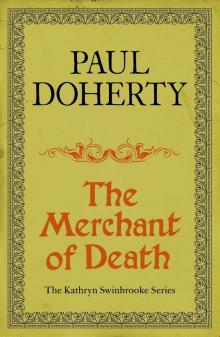 The Merchant of Death
The Merchant of Death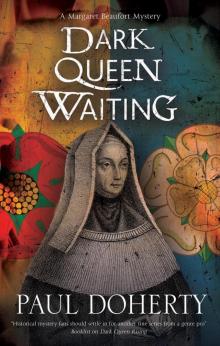 Dark Queen Waiting
Dark Queen Waiting Devil's Wolf
Devil's Wolf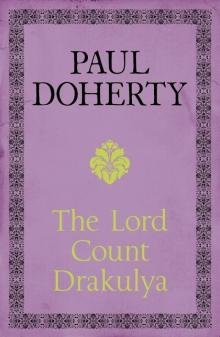 The Lord Count Drakulya
The Lord Count Drakulya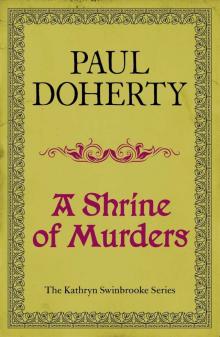 A Shrine of Murders
A Shrine of Murders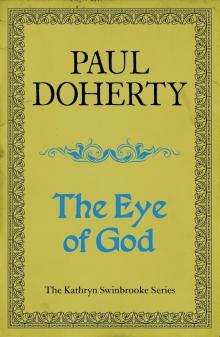 The Eye of God
The Eye of God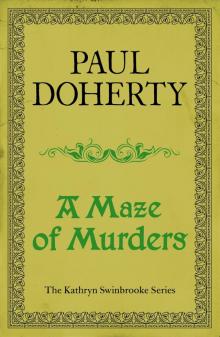 A Maze of Murders
A Maze of Murders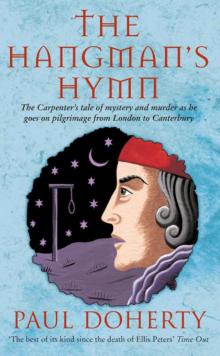 The Hangman's Hymn
The Hangman's Hymn The Godless
The Godless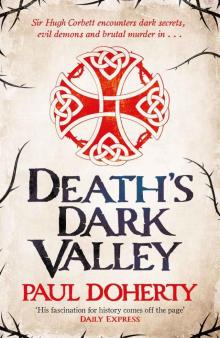 Death's Dark Valley
Death's Dark Valley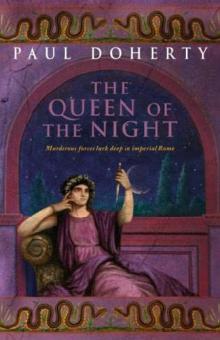 Queen of the Night ar-4
Queen of the Night ar-4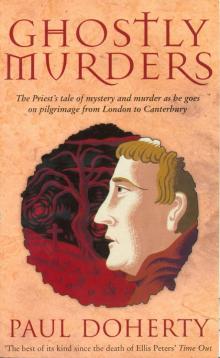 Ghostly Murders
Ghostly Murders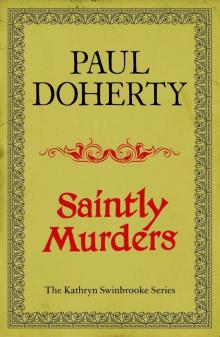 Saintly Murders
Saintly Murders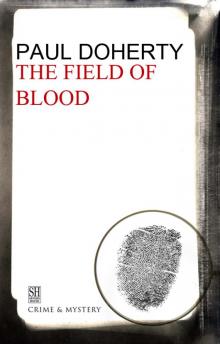 The Field of Blood
The Field of Blood Hugh Corbett 10 - The Devil's Hunt
Hugh Corbett 10 - The Devil's Hunt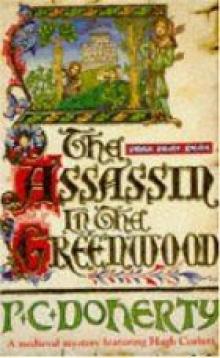 Assassin in the Greenwood hc-7
Assassin in the Greenwood hc-7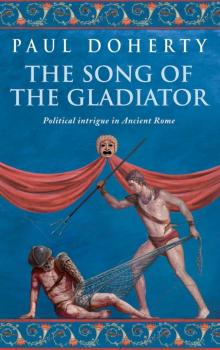 The Song of the Gladiator
The Song of the Gladiator Hugh Corbett 17 - The Mysterium
Hugh Corbett 17 - The Mysterium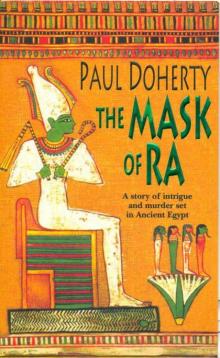 The Mask of Ra
The Mask of Ra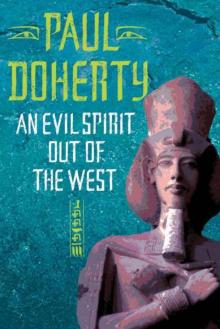 An Evil Spirit Out of the West (Ancient Egyptian Mysteries)
An Evil Spirit Out of the West (Ancient Egyptian Mysteries) Herald of Hell
Herald of Hell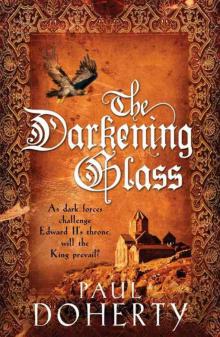 Mathild 03 - The Darkening Glass
Mathild 03 - The Darkening Glass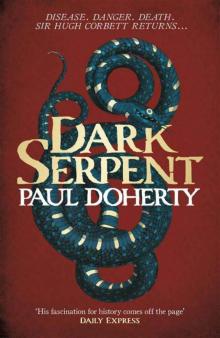 Dark Serpent (Hugh Corbett 18)
Dark Serpent (Hugh Corbett 18)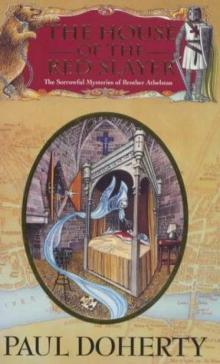 House of the Red Slayer smoba-2
House of the Red Slayer smoba-2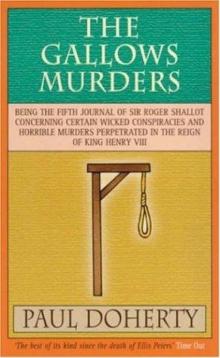 The Gallows Murders
The Gallows Murders The Straw Men
The Straw Men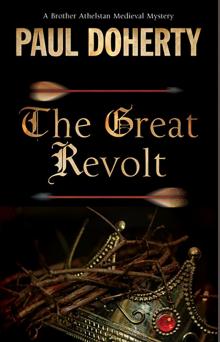 The Great Revolt
The Great Revolt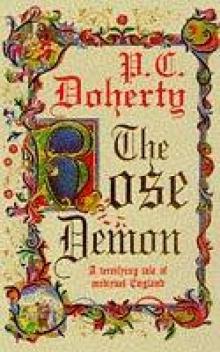 The Rose Demon
The Rose Demon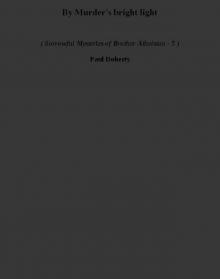 By Murder's bright light smoba-5
By Murder's bright light smoba-5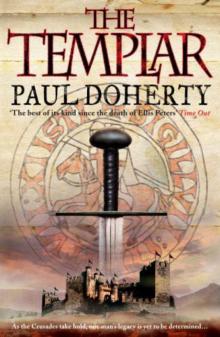 Templar
Templar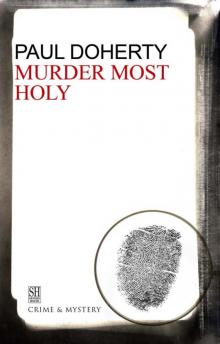 Murder Most Holy
Murder Most Holy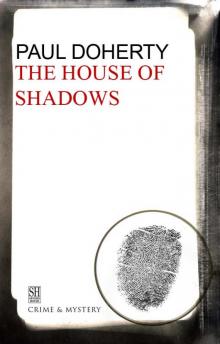 The House of Shadows
The House of Shadows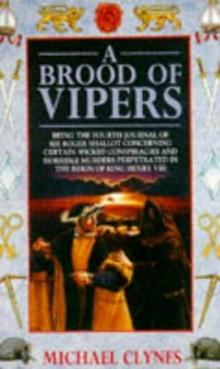 A Brood of Vipers srs-4
A Brood of Vipers srs-4 Song of a Dark Angel hc-8
Song of a Dark Angel hc-8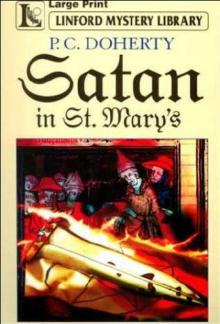 Satan in St Mary hc-1
Satan in St Mary hc-1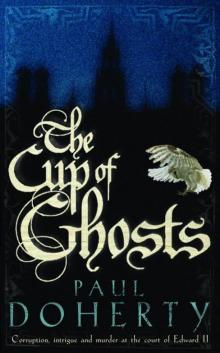 Mathilde 01 - The Cup of Ghosts
Mathilde 01 - The Cup of Ghosts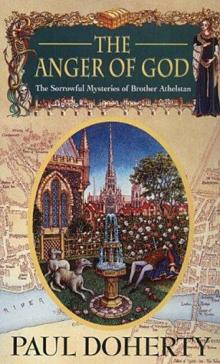 The Anger of God smoba-4
The Anger of God smoba-4 Isabella and the Strange Death of Edward II
Isabella and the Strange Death of Edward II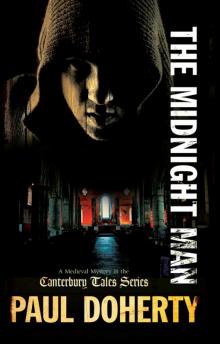 The Midnight Man ctomam-7
The Midnight Man ctomam-7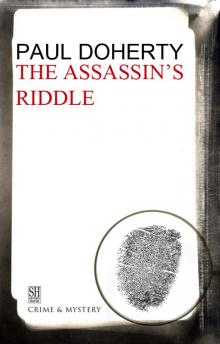 The Assassin's Riddle
The Assassin's Riddle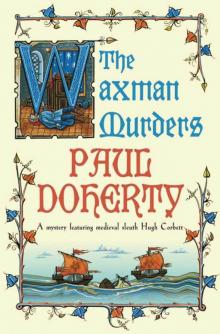 Hugh Corbett 15 - The Waxman Murders
Hugh Corbett 15 - The Waxman Murders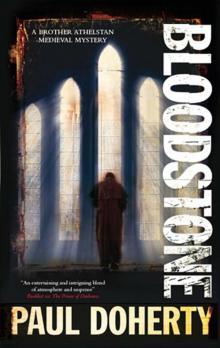 Bloodstone smoba-11
Bloodstone smoba-11 Bloodstone
Bloodstone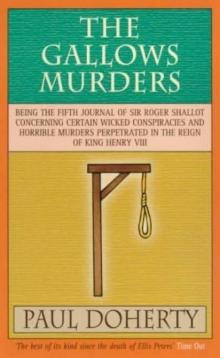 The Gallows Murders srs-5
The Gallows Murders srs-5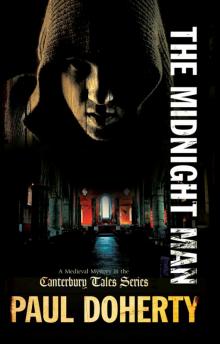 The Midnight Man
The Midnight Man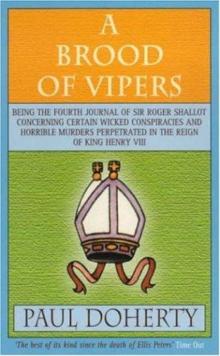 A Brood of Vipers
A Brood of Vipers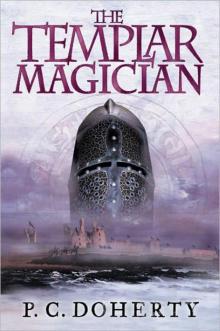 The Templar Magician
The Templar Magician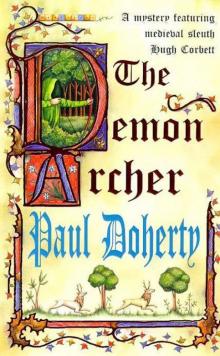 Hugh Corbett 11 - The Demon Archer
Hugh Corbett 11 - The Demon Archer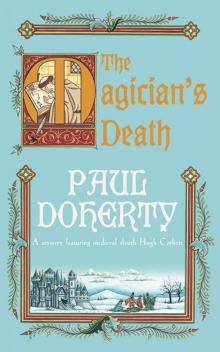 Hugh Corbett 14 - The Magician's Death
Hugh Corbett 14 - The Magician's Death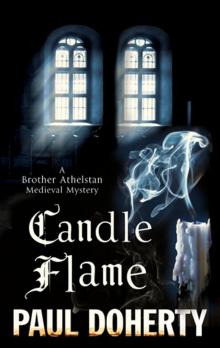 Candle Flame
Candle Flame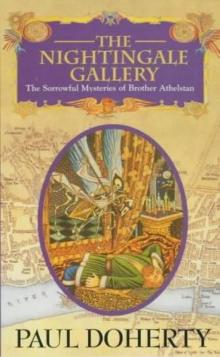 The Nightingale Gallery smoba-1
The Nightingale Gallery smoba-1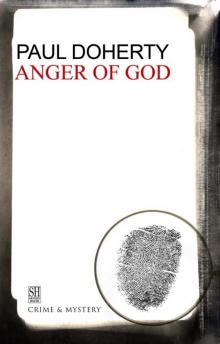 The Anger of God
The Anger of God The Book of Fires
The Book of Fires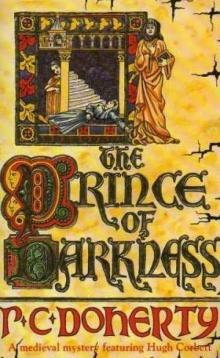 Prince of Darkness hc-5
Prince of Darkness hc-5 The House of Crows smoba-6
The House of Crows smoba-6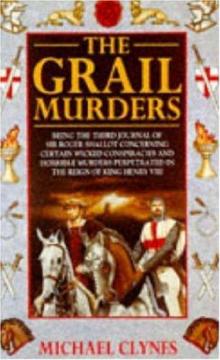 The Grail Murders
The Grail Murders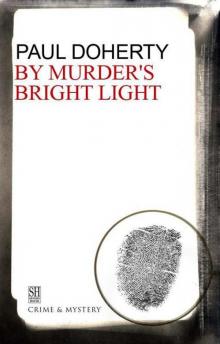 By Murder's Bright Light
By Murder's Bright Light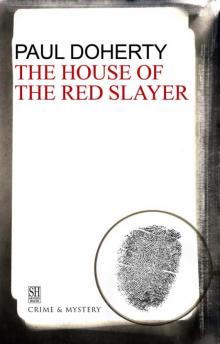 House of the Red Slayer
House of the Red Slayer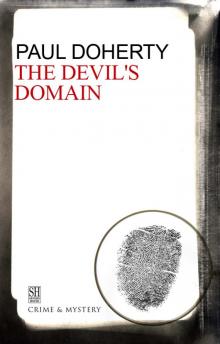 The Devil's Domain
The Devil's Domain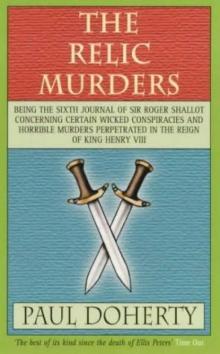 The Relic Murders srs-6
The Relic Murders srs-6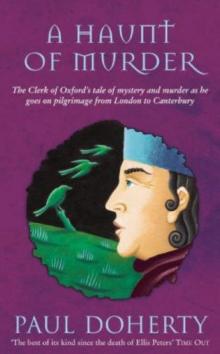 A haunt of murder ctomam-6
A haunt of murder ctomam-6 The Straw Men smoba-12
The Straw Men smoba-12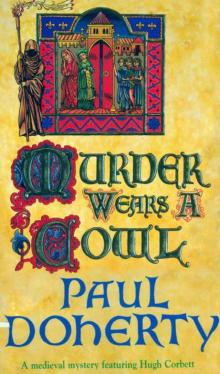 Hugh Corbett 06 - Murder Wears a Cowl
Hugh Corbett 06 - Murder Wears a Cowl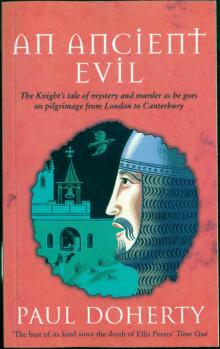 An Ancient Evil (Canterbury Tales Mysteries)
An Ancient Evil (Canterbury Tales Mysteries)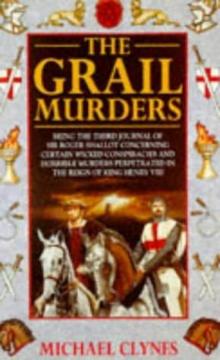 The Grail Murders srs-3
The Grail Murders srs-3 The Fate of Princes
The Fate of Princes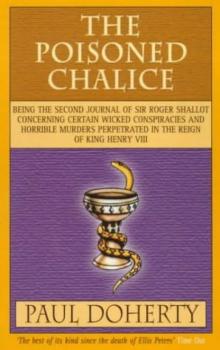 The poisoned chalice srs-2
The poisoned chalice srs-2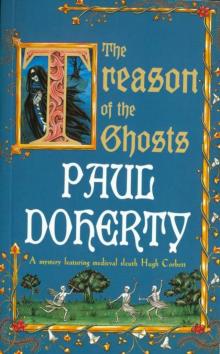 Hugh Corbett 12 - The Treason of the Ghosts
Hugh Corbett 12 - The Treason of the Ghosts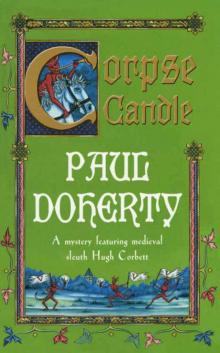 Hugh Corbett 13 - Corpse Candle
Hugh Corbett 13 - Corpse Candle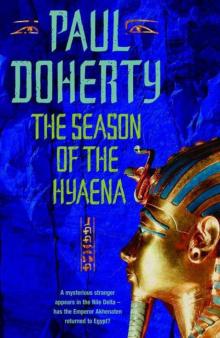 The Season of the Hyaena (Ancient Egyptian Mysteries)
The Season of the Hyaena (Ancient Egyptian Mysteries)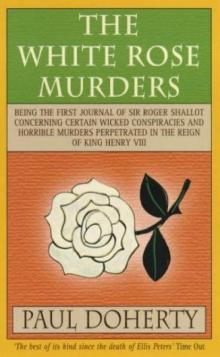 The White Rose murders srs-1
The White Rose murders srs-1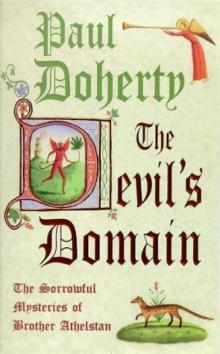 The Devil's domain smoba-8
The Devil's domain smoba-8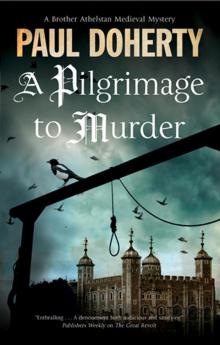 A Pilgrimage to Murder
A Pilgrimage to Murder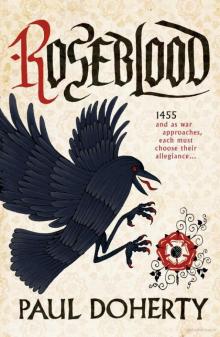 Roseblood
Roseblood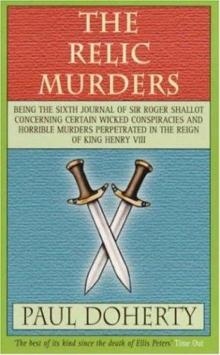 The Relic Murders
The Relic Murders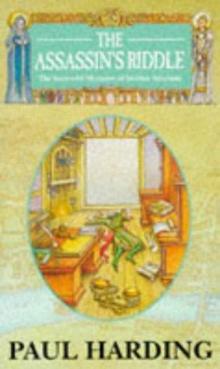 The Assassin's riddle smoba-7
The Assassin's riddle smoba-7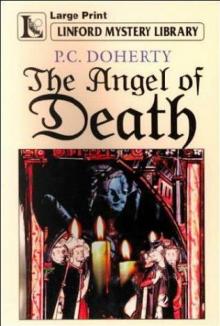 Angel of Death hc-4
Angel of Death hc-4 Dark Queen Rising
Dark Queen Rising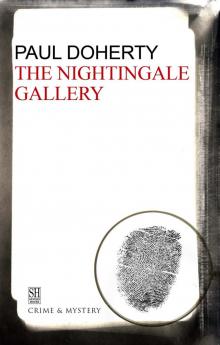 The Nightingale Gallery
The Nightingale Gallery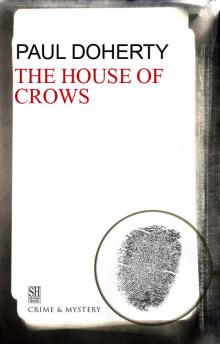 The House of Crows
The House of Crows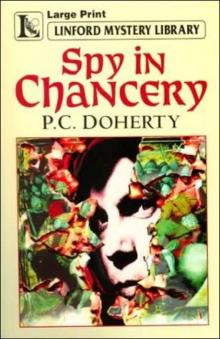 Spy in Chancery hc-3
Spy in Chancery hc-3